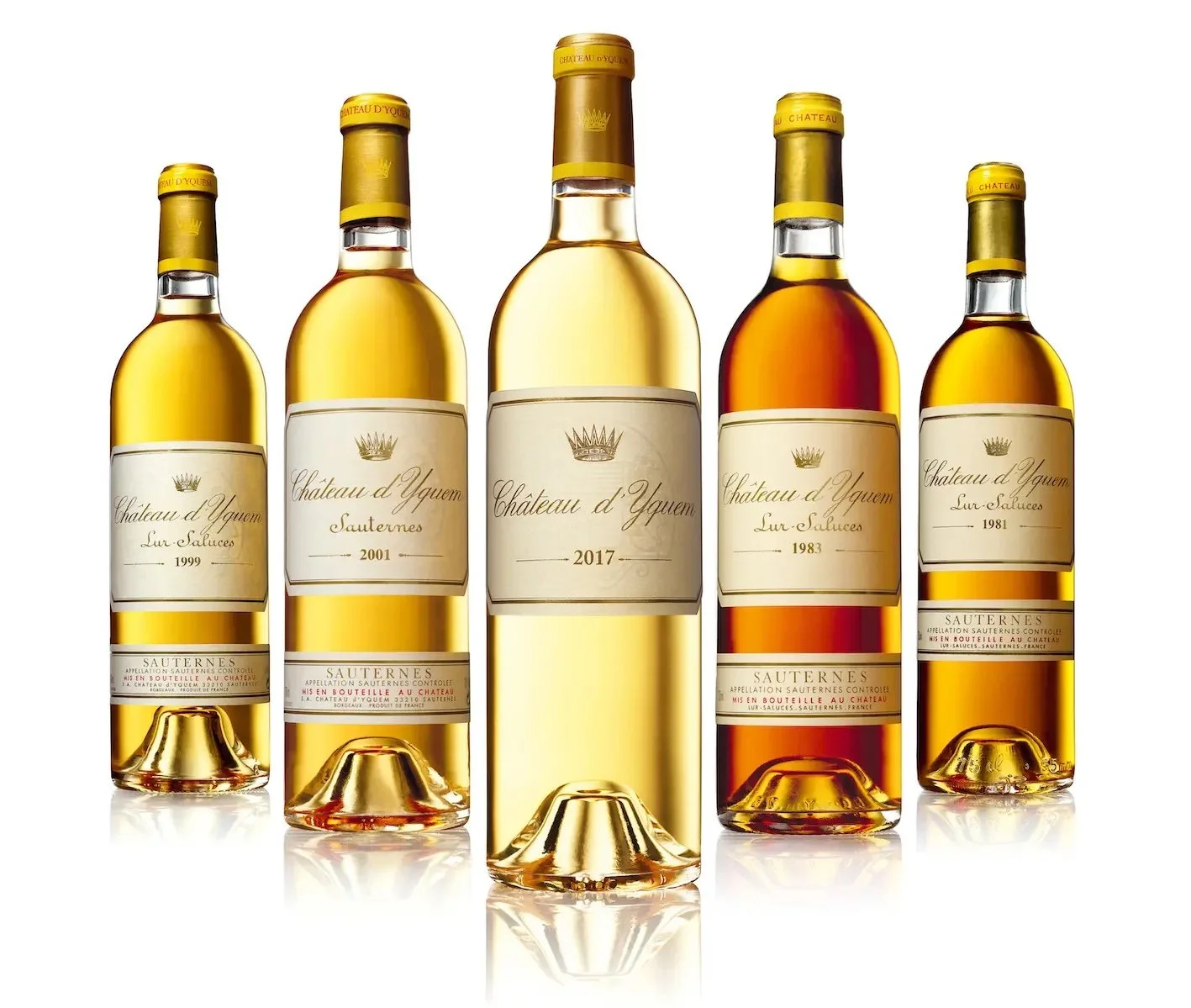Discover the Sweet Secrets of Iconic Wine Producer Château d’Yquem
Lewis Chester DipWSET reveals the fifth on his list of the World’s Best 12 Fine Wine Estates with the most iconic sweet wine producer.
The famed castle frontage of Château d’Yquem dates from the days of Léon de Sauvage d’Yquem in 1711, before the estate passed through marriage to the longtime owners, the de Lur-Saluces family. The history behind this Château is simply unrivalled. Thomas Jefferson was enraptured by d’Yquem, in particular the 1784 vintage. Perhaps the most famed vintage of all was the ‘comet’ vintage of 1811 which is on every d’Yquem lover’s bucket list. The 1855 Classification, which still resonates today, rated d’Yquem Premier Cru Supérieur, acknowledging that it was deemed higher than any other wine in the Bordeaux region.
The sweetness in the wine comes, not from adding sugar, but from botrytized berries (known as Botrytis Cinerea or noble rot) that develop on the skins of the berries due to the micro-climatic conditions of the Sauternes region. Production costs for noble rot grapes are much higher than for still wine grapes, as it takes teams of experienced pickers to select only the best grapes over multiple tries or passages that they make in the vineyard over a period of weeks. Making sweet wine is not for the fainthearted or for those without a big balance sheet to support them.
Luckily for d’Yquem, LVMH bought the property in 1999 and have been dedicated to keep quality at the highest level, whereas many of their neighbours have dropped theirs to account for falling demand. Indeed, it is one of the wonders of the fine wine world why d’Yquem is always so superior in quality than anyone else in Sauternes or Barsac, the two principal villages making sweet wine in Bordeaux. Although the terroir, perched on the highest hill in the area (up to 80 metres), surrounded by large gravelly pebbles that store heat, and clay soils that retain water greatly assist in producing a majestic wine, we cannot ignore the custodians of the past and present, the de Lur-Saluces and now LVMH, in preserving the vineyard and investing into the wine.
There is a misconception that sweet wines are either bad for your health and/or bad for the waistline. In fact, the key criteria is actually the level of alcohol in the wine. Alcohol has 7 calories per gram, whereas sugar has 4 calories per gram. The level of sweetness is therefore less influential than the level of alcohol. At around 13% ABV and people typically only having one glass of d’Yquem to satisfy themselves, the health and dietary programme is actually much better suited with d’Yquem than drinking two glasses of claret or Napa wine.
Nonetheless, the reduced amount of sweet wine being drunk today is in stark contrast to the past. Indeed, from the 18th century until the mid-20th century, most connoisseurs viewed the wines of Château d’Yquem – as well as other great sweet wine estates – as the very best expression of quality to be found in the wine world. Modern palates have not found favour with our forefathers.
For many of my wine loving friends, Christmas lunch tends to be the time when they whip out a favourite vintage of d’Yquem. However, I don’t subscribe to this rule. I regularly try to pair d’Yquem not only with dessert or cheese, but also with first course dishes instead of white wine. Drinking a younger d’Yquem with a fish or egg course can be a truly enlightening pairing. What is beyond doubt is that these wines are among the very best expressions of fine wine available in the world today, and deserve their place at the top table. Like the phonetic translation in Mandarin, Château d’Yquem is a ‘Drop of Gold’.
Best 3 Wines from Château d’Yquem
Château d’Yquem 2001: when Pierre Lurton, the CEO of the estate, told me that the wine we were about to drink would last over 100 years, I suspected he was engaged in marketing talk. However, he was probably right. A wine of exceptional balance, vibrant acidity, exhibiting tons of honied fruits and sweet spices, and a sumptuous finish. Exceptional.
Château d’Yquem 1989: my go-to d’Yquem to serve at important occasions. I love the power, complexity and silky texture of this wine. The marzipan, marmalade and saffron notes are incredible alongside hints of tobacco aromas from the wood ageing. It also has continued to improve as time has passed – always an indicator of greatness.
Château d’Yquem 1945: a close friend told me this wine would be a disappointment, but in fact it was a revelation. Orange peel, bergamot, smokiness, nuts and crème brûlée, and a thick dark coloured liquid that reminds you how well d’Yquem can age. Will be interesting to try alongside the 1811 vintage… at some point in my life!
The 2025 edition of the Golden Vines awards will take place in Miami between 7 and 9 November. liquidicons.com
Read the original version of this article on The Robb Report Monaco here and The Robb Report Hong Kong here.



